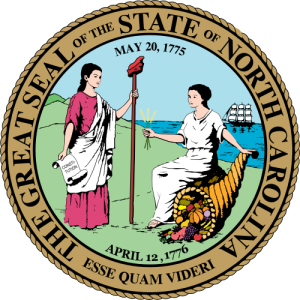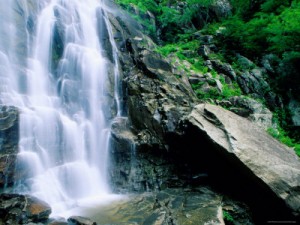 North Carolina Population 2013
North Carolina Population 2013
The United States Census Bureau estimates that the population of North Carolina in 2013 was 9,752,073, which is ranked the 10th largest population in the United States. Based on the last census in 2010, this shows a 2.3% increase in the population of the state of North Carolina. Based on the population and based on the area of the state, the population density of the state is about 212 people per square mile, ranked the 15th largest population density in the United States.
North Carolina Population Projections
Based on the historical trends of the state and expected migration, birth, and death rates, the population is expected to reach approximately 10.088 million people by the year 2015, which is an approximate 3.4% increase from the current population. By the year 2020, the population is expected to reach 10.629 million people, which is an approximate 9% increase from the current population. By the year 2025, the population is expected to reach 11.171 million people, which is an approximate 14.6% increase from the current population. By the year 2030, the population is expected to reach 11.712 million people, which is an approximate 20% increase from the current population. Lastly, by the year 2033, the population is expected to reach 12.036 million people, which is an approximate 23.4% increase from the current population.
North Carolina Land Mass
The state of North Carolina is about 500 miles long and 150 miles wide. The state also has a square area of 53,821 square miles, making it the 28th largest state in the country. About 5,100 square miles of the state are covered by water, compared to the approximate 49,710 square miles covered by land. Mount Mitchell is the highest point in the state, which reaches an approximate 6,680 feet above sea level. The lowest point in the state is at the Atlantic Ocean, which reaches sea level. The geographic center of North Carolina is located in Chatham County, 10 miles northwest of Sanford. Four states border the state of North Carolina: South Carolina, Tennessee, Virginia, and Georgia. Also, the Atlantic Ocean borders the state on the east.
North Carolina does not have distinct geographic land areas, but does have different types of terrain and land throughout the state. The eastern 40% of the state is mainly made up of coastal plains and tidewater. The next 40% of the states to the west of that area is made up of plateaus similar to the Piedmont region. The last 20% of the state is made up of rolling hills and parts of the Appalachian Mountains. The Blue Ridge and the Smokey Mountains are also part of this portion of the state.
North Carolina Demographics
Approximately 51.3% of the state’s 9.752 million people is female, while the other 48.7% of the population is male. Also, approximately 72% of the population identifies as white (including Hispanic or Latino). But, out of that 72%, about 9% do identify as Hispanic or Latino and the other 63% as Caucasian. Those that identify as Black or African American make up 22% of the entire population of the state of North Carolina. The rest of the population is made up of those that identify as Asian, American Indian, Alaskan Native, Hawaiian, other Pacific Islanders, or those that identify as two or more races. These other races make up about 6% of the North Carolina population.
North Carolina Religion
The population of North Carolina identifies as religious at a rate only slightly lower than the national average. About 48% of the state population identifies as religious, compared to the national average of 49%. Out of the 48%, about 19% identify as members of the Baptist Church, making it the largest denomination in the state of North Carolina. The next largest denomination in the state is the Methodist Church, which makes up about 9% of the population. All the other Christian denominations make up about 19.3% of the population. Those who identify as Jewish, Islamic, or Eastern religions only make up 0.7% of the population.
Enjoy a Deeper Journey in North Carolina
 North Carolina Sports
North Carolina Sports
The state of North Carolina has teams represented in three of the major professional sports: basketball, football, and hockey. The team represented in the National Basketball Association is the Charlotte Bobcats. The Bobcats are based out of Charlotte, North Carolina and play in the Time Warner Cable Arena. The Carolina Panthers are the team represented in the National Football League. The Carolina Panthers are based out of Charlotte, North Carolina and play the home games in the Bank of America Stadium. Lastly, the Carolina Hurricanes is the team represented in the National Hockey League. The Hurricanes are based out of Raleigh, North Carolina and play in the PNC Arena. The state also has over 18 colleges and universities that compete in NCAA Division I sports. Some of these colleges include Duke University, North Carolina State, and the University of North Carolina at Chapel Hill.
 North Carolina State and National Parks
North Carolina State and National Parks
The state of North Carolina has 10 national parks. The number of people that visited the 10 national parks in the year 2012 is about 17.71 million people. As a result of all of these visitors, approximately $725 million was contributed to the economy of the state due to the national parks. Along with these national parks, the state has 2 national heritage areas, 13 national natural landmarks, and 38 national historic landmarks.
North Carolina has 39 state parks, 7 state lakes, 4 state rivers, and 4 state trails. About 14.3 million people visited these state parks and state locations in the year 2011. Approximately $400 million was contributed to the economy of the state due to the state parks.
Get educated about the state of North Carolina with this link.


